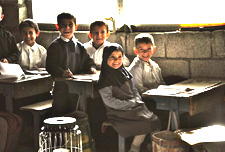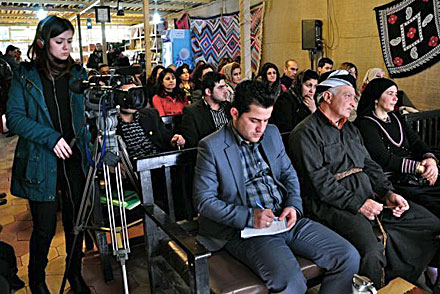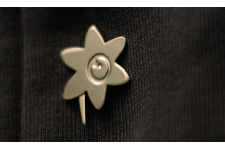Impact of psychological disorders after female genital mutilation among Kurdish girls in Northern Iraq
by Jan Ilhan Kizilhan
Department of Rehabilitation Psychology and Psychotherapy, Migration and Rehabilitation Study group University of Freiburg. Germany
Correspondence
ABSTRACT
Background and Objectives: This study investigated the mental health status of young girls after genital mutilation in Northern Iraq. Although experts assume that circumcised girls are more prone to psychiatric illnesses than non-circumcised girls, little research has been conducted to confirm this claim. For the purpose of this study, it was assumed that female genital mutilation is connected with a high rate of posttraumatic stress disorders (PTSD).
Methods: The psychological impact of female genital mutilation was assessed in Northern Iraq with 79 circumcised Kurdish girls who were between 8 and 14 years of age. Thirty uncircumcised girls from the above area and thirty-one uncircumcised girls from other areas of Iraq served as comparison subjects. A psychological interview and further questionnaires were used to assess traumatization and psychiatric illnesses.
Results: The circumcised girls showed a significantly higher prevalence of PTSD (44.3%), depression disorder (33.6%), anxiety disorder (45.6%) and somatic disturbance (36.7%) than the uncircumcised girls. We could not find any significant differences between the two control groups.
Conclusions: Within the circumcised group, a mental health problem can be diagnosed that may constitute the first evidence for the severe psychological consequences of juvenile girls´ genital mutilation.
Key words: Female Genital Mutilation (FGM); PTSD; Mental Health; Iraq.
Introduction
According to the World Health Organization's relevant definition, female genital mutilation (often referred to as "female circumcision") comprises all procedures involving the partial or total removal of the external female genitalia or other injury to the female genital organs, whether for cultural, religious or other non-therapeutic reasons1. Female genital mutilation (FGM) has been registered in 28 African countries as well as in parts of the Middle East and Asia (Yemen, Oman, United Arab Emirates, Bahrain, and Northern Iraq, as well as India, Malaysia, and Indonesia). In Europe, the USA, Canada, and Australia, this practice can mainly be found among immigrants from these regions.
In some countries of Africa, such as Egypt, Ethiopia, Djibouti, Guinea, Mali, Somalia and Sudan, between 85% and 99% of the female population is "circumcised"2,3.
The advocates of FGM support their cause with a selection of "reasons", depending on their social and geographic origin or educational background, e.g. tradition, religion and claims such as "circumcision reduces the inordinate sexual desire of women, increases their fertility and prevents illnesses"and "the clitoris is noxious"1,2.
In Iraq, female genital mutilation has been brought to public attention by several human rights organizations since 2003. Since the end of the Saddam Hussein era, the areas along the Iraq-Iran border can be visited. They are the ones which are primarily affected by FGM. In Northern Iraq, about 5-10% of the female population is estimated to be circumcised4,5.
The age of the performance (of female genital mutilation) varies across and within countries. Most of the operations occur before the end of childhood (mainly between 4 and 10 years of age). The medical consequences have been broadly investigated. However, hardly any research has been conducted to qualify and quantify the impact on psychological health. Case studies mention phobias, depression, and sexual disorders6. Nonetheless, it has been ignored that female genital mutilation which represents a violation of the concerned person's physical integrity can be classified as a psychological trauma according to DSM-IV and a potential cause of posttraumatic stress disorders (PTSD). Hence, the purpose of the study was to explore the conjunction between female genital mutilation and psychiatric illnesses, and here in particular PTSD. Despite the infliction of long-lasting somatic harm on most individuals, the fact that female genital mutilation is culturally embedded may represent a protective factor against the emergence of PTSD7.
Method
Sample
In the Northern Iraqi region which borders Iran, genital mutilation has been practiced by a muslim minority. They are convinced that it is mandatory by Islamic law. The majority of the population (of 200,000-300,000) is strongly religious and culturally conservative. In the era of Saddam Hussein, some two thirds of the adult population had been refugees at least once4,5.
The originally investigated group consisted of 92 Kurdish girls from North-Iraq aged between 10 and 16 who were interviewed between May and October, 2009 with the questionnaire described below. Their circumcisions had occurred from 5 to 8 years ago. The group was approved by the University Ethical Review Board and Health Ministry in Hewler, Northern Iraq. The study was done from the workgroup Migration and Rehabilitation at the University of Freiburg in Germany
The author of this contribution got in touch with both the investigational and the control group through local female physicians and psychologists he knows from earlier common projects. The physicians and psychologists had already been in contact with villagers who frankly confessed themselves to genital mutilation in females and who had nothing against an investigation.
Before the actual data collection, visits were made to test persons' homes with these ends in mind: to obtain written permission for their participation in the study and to provide their families with a brief description of the study, its purpose, and of how the data would be used. Surprisingly, none of the households refused to participate in the study.
The first control group was from the same region, and the criteria established for the selection of their members were these: They had to be uncircumcised and their place had to be closest to the investigational group's residence. The second control group was chosen at random, and it was to meet these criteria: They had to be uncircumcised and their place had to be a minimum of 100 km away from the investigational group's residence.
The interviews were done verbally and the investigators transcript promptly the answers in the right instruments. Since not all interviewees filled in the complete questionnaire (N = 92), a sample of N = 79 remained for analysis after elimination of the incomplete data sets. For better comparability, uncircumcised girls were selected from the same region (N = 30) as well as from a different region about 100 km away near the town of Arbil (N = 31). All participants we-re proficient in the Arabic language.
Measures
The children's DIPS8 is a version for children of the "Diagnostic Interviews for Psychic Disorders"9. It is the extended version of the "Anxiety Disorders Schedule - Revised"10. This interview is a structured one where the nature and order of questions as well as the coding and evaluation of answers are predefined, very much along the lines of the SKID system for adults. The interviewer may, however, put further questions to remove ambiguity, e.g. if he feels that there is a question the interviewee does not understand. This aspect gains in importance if children are the subjects of investigation.
The children's DIPS allows the diagnosis of lifetime and point prevalences of psychic disorders on the basis of both the criteria of DSM-IV and the investigation criteria of ICD-10. It is earmarked for children and juveniles aged 6 to 18. Interrater and test-retest reliabilities are rated as satisfactory by the authors.
The questionnaire was translated from its German version into the Arabic language, and then it was retranslated and checked by an Arabic speaking physician and psychologist in Germany. No validity and reliability study was carried out so far.
Child PTSD Reaction Index
(Arabized Version). This instrument is a translation of the Child PTSD Reaction Index (CPTSD-RI) developed by Frederic, Pynoos and Nader (1987)11. It consists of a 20-item self-report (interview format) questionnaire based on DSM-III criteria for PTSD. Items are rated on a five-point scale ranging from 0 (never) to 4 (most of the time). CPTSD-RI score ranges and associated degrees of PTSD symptom severity are as follows: 0 to 11: none; 12 to 24: mild; 25 to 39: moderate; 40 to 59: severe; and 60 to 80: very severe. The Arabized instrument was used previously on Palestinian children and was found to be appropriate for this population11-13.
Arabized Version of the Children's Depression Index (CDI)
This instrument consists of 27 items related to depression symptoms measured on a three-point (always, sometimes, never) scale. It is based on the original instrument developed by Kovacs (1982)14 and was translated and normed on Arab children by Gharib (1988)15. Reliability and validity data for the Arabized version are comparable to those provided for the original instrument.
The Cooper Smith Self-Esteem Inventory (Arabized Version)
This 25-item scale was translated, Arabized, and normed on Arab children by Musa and Dassouki (1981)16. The instrument was used widely on Arab children, including Palestinians, and was found to be appropriate for such populations17,18.
The data collection was carried out by trained female professionals from 1st July to 15th October 2009, with supervision by the author.
Statistical Analyses
The data were analysed using the Statistical Package for the Social Sciences, SPSS version 11.0 for Windows. Descriptive statistics were used to present the characteristics of the sample.
The data were scored, coded, and ana-lysed using descriptive statistics and discriminant analysis on the scores of the three groups of children according to age, gender, PTSD, depression, and self-esteem. A critical statistical significance was determined for an Overall Effect at α = 0.05. Given the small survey sample sizes statistical analyses were carried out with non-parametric statistical methods.
The groups' multiple comparisons following hereafter were undertaken by means of the Mann-Whitney U test considering the statistical significance adjusted according to Bonferroni.
Results
Demographics
Table 1 shows the sociodemographic data of the three groups. The sample consisted of 79 circumcised girls with a mean age of 12.2 (SD 2.61) years (range 8-14), 30 uncircumcised girls from the same area with a mean age of 12.1 (SD 2.12) years (range 9-14), and 31 circumcised girls from a different area with a mean age of 12.4 (SD2.16) years (range 8-14).
Three-quarters of the investigational group (N = 57) had a monthly family income of US$400 or less, compared to 15 families (18.9%) earning $300-700 and 7 families (8.9%) having an income above $750. With regard to employment, 38 fathers (43.0%) described themselves as farmers, 18 (26.6%) of them were skilled workers, 11 were freelancers or self-employed (13.9%), and 10 (16.2%) were civil employees or unemployed (17.7%), 6 (7.6%) fathers were retired. There are no differences between this group and the other two (s. Table 1).
In the last 20 years, the selected girls and their parents were not involved in war action, flight, captivity and/or organized use of force.
All circumcised participants remembered the day of their circumcision as extremely frightening and traumatizing. Over 78% of the girls described feelings of intense fear, helplessness, horror, and severe pain, and over 74% were still suffering from intrusive re-experiences of their circumcision. For 68% of the subjects, the event had been performed unexpectedly and without any preliminary explanation. Almost 45.6% of the circumcised girls met the criteria for an anxiety disorder. Eleven girls (13.9%) were suspected to suffer from personality disorders, and 17 (21.5%) girls met the criteria for a somatoform disorder. Furthermore, 36.7% of the circumcised girls complained about a range of somatic problems. In the control group, one (3.3%) girl met the criteria for a somatoform disorder, two (6.7%) girls fulfilled the criteria for anxiety disorders. Nobody met the criteria for a personality disorder. Eight (26.7%) girls from the control group complained about somatic disturbances.
PTSD Symptomatology
Table 3 shows that the mean PTSD score for Group 1 (44.3) fell within the high PTSD symptomatology range (40-80). The two control groups (Group 2 = 14.5, Group 3 = 13.6) fell within the low (12-25) PTSD symptomatology range. The scores, however, varied widely among the two control groups, ranging from experiences of mild symptoms (0-18) to very severe ones (greater than 28). Group 1, i.e. circumcised girls, have a significantly higher PTSD symptomatology range (p < 0.001).
The mean depression scores depicted in Table 2 reveal that Group 1 displayed moderate (45-54 percentile) symptoms of depression. Group 2 and 3 displayed minor (0-18 percentile) symptoms of depression. Table 3, however, also shows circumcised girls (Group 1) who from the traumatic event displayed depression scores significantly (p < 0.001) higher (M = 33.57) than the uncircumcised girls in the same area (M = 11.07) or uncircumcised girls from a different area (M = 12.09).
The dispersion of depression scores was particularly pronounced in Group 2 (Range = 0-18) compared with Group 3 (0-16) and Group 1 (21-36).
According to the circumcised girls' statements the main irritants or triggers for them were narrations and discussions about circumcision that occurred in the family circles and in the village community on the one hand and marriage in connection with sexuality on the other hand. On television and in the news papers they did not see or read anything about the subject.
The results depicting self-esteem scores show that the mean values of Group 1 (21.61) fall outside the norms for their peers in the Arabic-speaking world16. Group 2 (17.1) and Group 3 (16.42) did not score outside the norms (fifth stanine). There is a significant difference between Group 1 on the one hand and Group 2 and Group 3 on the other hand (p < 0.001). Group 2 and Group 3 did not differ from each other significantly, as shown in Table 4.
Results of the discriminate analysis revealed that the PTSD (p < 0.001), depression (p < 0.001) and self-esteem (p < 0.001) scores were variably capable of discriminating among the three groups with statistical significance.
Discussion
The results of this study indicated that female genital mutilation is likely to cause various emotional disturbances, forging the way to psychiatric disorders, especially PTSD. The high rate of PTSD of more than 44.3% in the investigated group is comparable to the rate of PTSD of early childhood abuse, which on average ranges from 30% to 50%18,19. Symptoms of depression, psychosomatic conditions, sleep disturbances, and PTSD were found to be above normal levels. These findings are congruent with pre-vious findings on traumatized and abused children19,20. The results of the study also showed that symptoms of depression and self-esteem constituted an index able to discriminate among the three groups with statistical significance.
Despite the fact that female genital mutilation constitutes a part of the participants' ethnic background, the results imply that cultural embedment does not protect against the development of PTSD and other psychiatric disorders3.
Although the results of this study support the claim that female genital mutilation exerts a major negative impact on mental health beyond somatic complications, some caution is warranted in interpreting these results. The small group size presents an important limitation, and the results do not allow general conclusions about the prevalence of psychiatric disorders after female genital mutilation. The composition characteristics of the group (i.e. their low age and level of education) might also have an influence on the findings of this study. The attempt to interview girls or juvenile females with higher education levels with a female interpreter did not work out because of the sensitive subject and the highly secretive nature of female genital mutilation5,20.
Moreover, the low prevalence of female genital mutilation in Iraq may be another reason for the occurrence of psychiatric disorders, possibly representing another risk factor for the establishment of PTSD. Since only 5-10% of the female population has undergone female genital mutilation, circumcised women are often aware that their status is not generally accepted in society. Furthermore, in schools and other public facilities people are increasingly taught about its negative effects, creating an atmosphere opposed to female genital mutilation21. As a consequence, the assimilation of the trauma may be different from the one in other Arab or African countries where circumcision is more widespread. Of course, many other factors, such as coping style, other traumatic experiences, information before circumcision, and sexual experiences, may also play an important role in the mental health outcome. Nevertheless, this study provides an additional strong argument for the provision of culturally founded knowledge that could contribute to the eradication of female genital mutilation. In the spirit of the expanding role of psychiatrists and psychologists in documenting human rights abuses, it is of great importance to continue research and to support women suffering from emotional difficulties. The alarmingly high rates of psychiatric disturbances among this group of circumcised girls provide important evidence that researchers as well as clinicians have an obli-gation to pay more attention on the urgent needs of circumcised girls and women.
With regard to our study it should still be critically noted that the number of examination subjects was low, that the investigated group and the control group to be compared came from diverse regions, that the long-term psychosocial and political stresses of the Saddam era may have left traces which still remain and that the children were unfamiliar with series of tests.
References
1. World Health Organization. Female Genital Mutilation: Integrating the Prevention and the Management of the Health Complications Into the Curricula of Nursing and Midwifery: A Student's Manual. Geneva: World Health Organization; 2001. [ Links ]
2. Terres des Femmes. Studie zu weiblicher Genitalverstümmelung (FGM = Female Genital Mutilation). Self-publication, TDF, Tübingen; 2005. [ Links ]
3. Behrendt A, Moritz S. Posttraumatic Stress Disorder and Memory Problems after Female Genital Mutilation. Am J Psychiatry 2005; 162: 1000-1002. [ Links ]
4. WADI. Weibliche Genitalverstümmelung im Nordirak, www.wadinet.de/projekte/frauen/fgm/studie.htm, 2008. [ Links ]
5. Human Right Watch. They took me and told nothing. Female Genitale Mutilation in Iraqi Kurdistan. New York: Human Right Watch; 2010. [ Links ]
6. Lightfoot-Klein H. Secret Wounds. Bloomington, Ind, First Books (Authorhouse); 2003. [ Links ]
7. Fontana A, Rosenheck R. Traumatic war stressors and psychiatric symptoms among World War II, Korean, and Vietnam War veterans. Psychol Aging 1994; 9: 27-33. [ Links ]
8. Unnewehr S, Schneider S, Margraf J. Diagnostisches Interview bei Psychischen Störungen bei Kindern und Jugendlichen (Kinder-DIPS). Berlin: Springer; 1995. [ Links ]
9. Margraf J, Schneider S, Ehlers A. Diagnostisches Interview bei psychischen Störungen: DIPS. Berlin: Springer; 1994. [ Links ]
10. DiNardo PA, Barlow DH. Anxiety Disorders Interview Schedule - Revised (ADIS-R). Unpublished Manuscript, Center for Anxiety and Stress Disorders, Albany, New York; 1988. [ Links ]
11. Frederick C, Pynoos R, Nader K. Child post-traumatic stress disorder reaction index. (Available from Pynoos, Adult Psychiatry, 300 UCLA medical Plaza, Los Angeles, CA. 90024-6968); 1992. [ Links ]
12. Quouta S, El-Sarraj E, Punamaki RL. Mental flexibility as resiliency factor among children exposed to political violence. Int J Psychol 2001; 36(1): 1-7. [ Links ]
13. Thabet AA, Vostanis P. Posttraumatic stress disorder reactions in children of war: A longitudinal study. Child Abuse Negl 2000; 24(2): 291-298. [ Links ]
14. Kovacs M. Children's depression inventory (CDI). Western Psychiatric Institute and Clinic, University of Pittsburgh, PA; 2003. [ Links ]
15. Gharib AG. Children's depression inventory. Cairo: Dar Al-Nahda; 1988. [ Links ]
16. Musa F, Dassouki M. A test of self-esteem for children. Cairo: Al-Nahda Publishers; 1981. [ Links ]
17. Baker AM. Psychological problems experienced by Palestinian adolescents associated with military occupation. In: Health hazards of organized violence in children: Program papers. Meeting of the Advisory Group on the Health Situation of Refugees and Victims of Organized Violence. London, Utrecht: Pharos Foundation; 1993. p. 10-12. [ Links ]
18. Baker AM, Kanan HM. Psychosocial impact of military violence on children as a function of distance from traumatic event: the Palestinian case. Intervention 2003; (3): 13-21. [ Links ]
19. Kessler Bodiang, C, Eppel, G., Guèye, AS.: Female Circumcision in the Area of Kolda in Senegal: Perceptions, Attitudes, and Practices. Ziguinchor, Senegal, Gesellschaft für Technische Zusammenarbeit (GTZ); 2001. [ Links ]
20. Miller T, El-Masri M, Allodi F, Qouta S. Emotional and behavioral problems and trauma exposure of school-age Palestinian children in Gaza: Some preliminary findings. Medicine Conflict and Survival 1997; 15(4): 368-378. [ Links ]
21. Kessler RC, Sonnega A, Bromet E, Hughes M, Nelson CB. Posttraumatic stress disorder in the National Comorbidity Survey. Arch Gen Psychiatry 1995; 52: 1048-1060. [ Links ]
Correspondence:
Prof. Dr. Jan Ilhan Kizilhan
Institute of Psychology, Department of Rehabilitation
Psychology and Psychotherapy
Migration and Rehabilitation Study group
University of Freiburg, Engelberger Str. 41
79106 Freiburg, Germany
Phone: +49-(0)7725-932430
Fax: +49-(0)7725-932499
E-mail: kizilhan@psychologie.uni-freiburg.de
Revised: 8 November 2010
Accepted: 21 December 2010
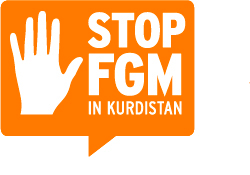


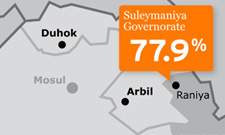
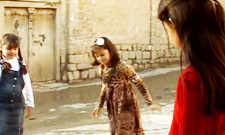
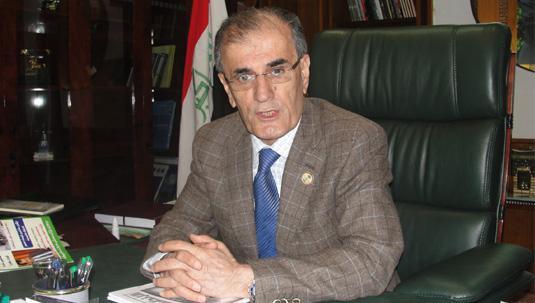
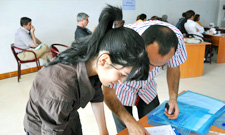
 Clinton: 'Cultural Tradition' is No Excuse for Female Genital Mutilation
Clinton: 'Cultural Tradition' is No Excuse for Female Genital Mutilation